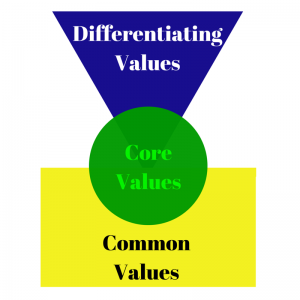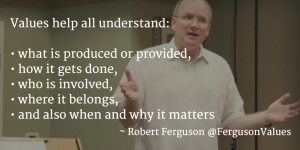The future of marketing involves anticipation
 Have you ever wished you could go back in time, say 10 or 20 years, and become the inventor of many technologies we use today? You’d be rich!
Have you ever wished you could go back in time, say 10 or 20 years, and become the inventor of many technologies we use today? You’d be rich!
The reality is we stand today looking forward.
What will be the next BIG thing – in smartphones, computers, entertainment, healthcare, personal care, education, fundraising, etc.? What will be the next be thing in your industry? What about in your organization?
Is it really possible to anticipate “what’s next’?
Maybe it’s worth exploring the value of anticipation.
The Value of Anticipation
As a differentiating value, Anticipation means an expectation; considering something beforehand.
Note the two key components of this value:
1) Expectation. In 2001, there were lots of MP3 players on the market. Steve Jobs and his team at Apple didn’t wish for an Apple version of an MP3 player. They anticipated something different. Their expectation was for an iPod, something small, sleek, and with a well-designed user interface. Did Steve Jobs know what it would look like before the iPod was created? Of course not. But his expectation was already established such that he was looking for it before he even knew what it would look like.
2) Considering something beforehand. In 1995 the World Wide Web was still in its infancy. When Jeff Bezos turned on Amazon.com as an online bookstore, he carefully considered where this new phenomenon was going. Did he know that someday he would be selling consumer electronics, apparel, and sporting goods? Of course not. But he did carefully consider beforehand the relationships he would be forming with consumers over the Internet and the trust he needed to earn for his future success.
The value of anticipation worked for Jobs and Bezos. It can also work for you today.
Successful future marketers don’t spend time looking back. They are investing their precious time today gathering insights into the future of anticipation.
Powering anticipation through insights
As a marketer, there are 3 types of insights that can help you leverage the power of anticipation.
1) Category Insight. This is the outward macro view of your world. Have you considered all of your competitors (both direct and indirect) and the sandbox in which your brand is playing today? How can you change the game to your advantage? In what categories should you be playing? What aspects of your brand drive the most passion internally? What elements of your brand, if they were missing, would cause it to be treated as a commodity? It’s like taking all the pieces of a puzzle and creating a different picture than what’s on the box.
2) Customer Insight. This is the outward micro view of your world. I encourage you to go on a journey of amazing discoveries of the small things that matter. Look beyond your normal sources of information. Talk to customers one-on-one to obtain a clear and deep understanding of a specific problem or need. Learn to ask better questions, as I outlined in a previous post the value of insight for marketers. Surprisingly, this is the most overlooked tool in a marketer’s toolbox.
3) Creative Insight. This is the inward view of your world. Where do revolutionary creative insights come from? Inside you. How effective is your ability to think deeply? Successful people think differently because they practice the art of thinking. Do you find this difficult? John Maxwell goes into great depth on 11 different kinds of thinking in his book Thinking for a Change, including reflective thinking, focused thinking, and creative thinking. I encourage all marketers to read this book. It will change the way you think.
These three types of insights provide the fuel for anticipation and the vision for a better future – for your customers, your employees, your shareholders – and you.
How else can marketers leverage the power of anticipation?
How can the value of anticipation make a difference in your marketing?
Today’s value was selected from the “Diversity-Flexibility” category, based on the e-book Developing Your Differentiating Values.







